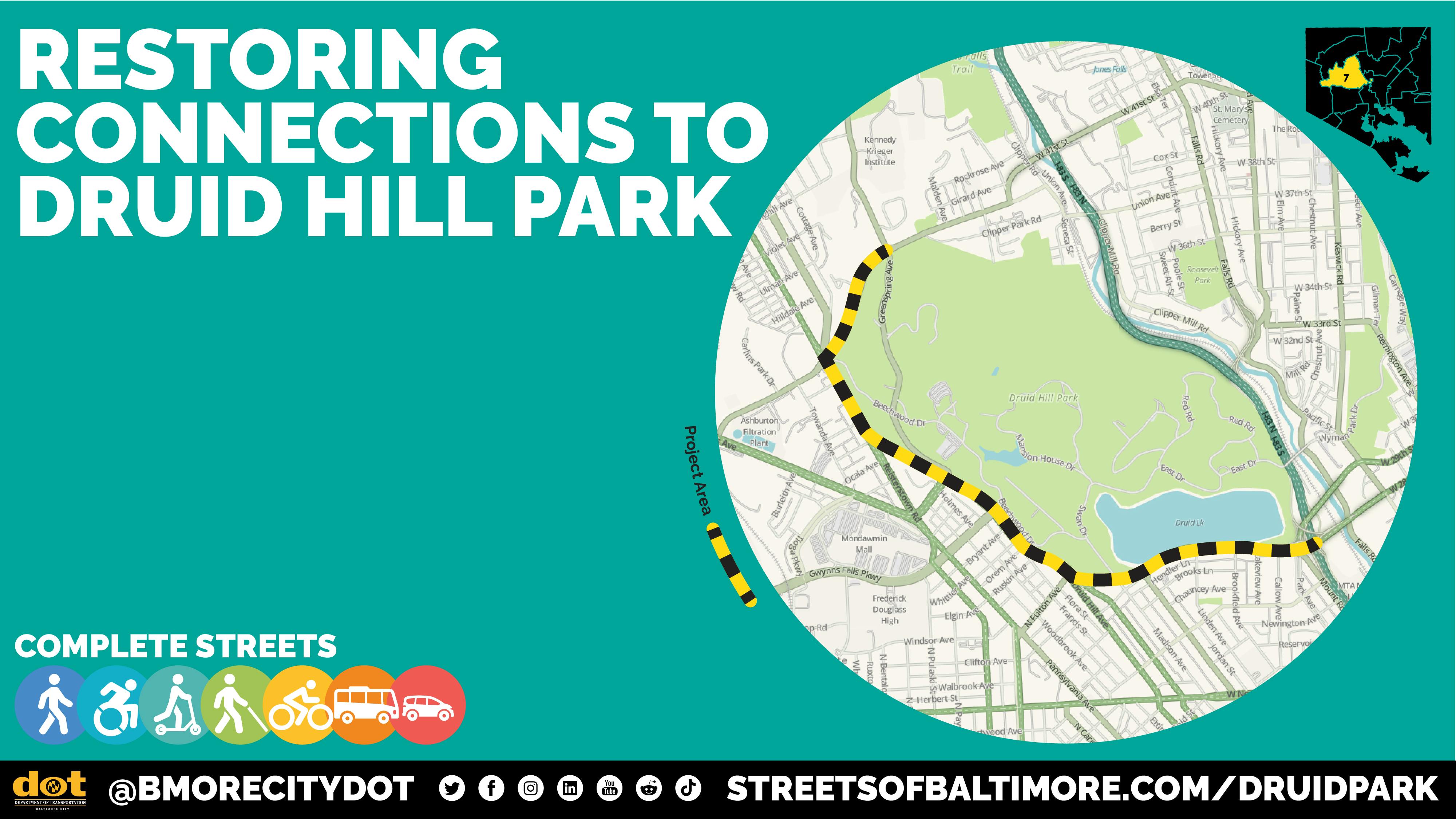The Druid Lake project to protect Baltimore City and county water from contamination and potential bioterrorism attacks has left many people thirsty for updates about its completion.
Drive around Druid Hill Park where the lake is located, and the gated-off area and construction vehicles may make it seem that there’s still a lot left to complete the project.
But city officials say just a few more months.
The Baltimore City Department of Public Works expects the Druid Lake project to be completed by the end of the summer. One of two tanks — designed to hold 52 million gallons of water combined — is already providing treated drinking water to customers. The second tank is expected to begin operating in the coming months.
Last December, the department hadn’t announced when the second tank might be operational or when in the summer they were aiming for completion.
The lake, no longer used as a reservoir, is considered a recreational feature of the park, though not fully built out and available for use, according to the department. Next steps are restoring pathways and trails around the lake, including a loop often used for biking, running and walking.
Federal government regulations were set in 2006 to either cover or treat open-air sources of drinking water, and jurisdictions were given until 2009 to get approval for compliance plans. The department initially launched construction of the tanks project in 2017, but it was met with delays.
The city received added pressure from the Environmental Protection Agency last May to comply with federal regulations at its Druid Lake and Lake Ashburton reservoirs and finished just before the amended timelines.
The department plans to continue quarterly community meetings to provide updates on the project. The next hybrid meeting is planned for June 4, and more details will be shared on the department’s social media channels and website.
Like a domino effect, the completion of the water tank project will segue into Baltimore City Recreation and Park’s capital project, the Druid Lake Vision Plan. But these recreational enhancements won’t come for a couple of years. Initial plans for the project included never-before-seen amenities at the park, including a bridge across the water, a fishing pier, shorelines, an amphitheater, a swimming area, cafe and a boathouse. The parks department is working with Unknown Studio, a landscape architecture and urban design studio, to bring the plan to the life.
“What we are trying to do is deliver what the people asked for first, which is really circulation around the lake,” said Nick Glase, principal of Unknown Studio.
In 2022, the parks department was in the schematic phase of the project. Well, they’re still there. Sort of. A subpart of that phase means following the money.
“In the next couple of months, we’ll have a better understanding of what things cost and what we anticipate to be able to provide or implement in the phase one of construction,” said Adam Boarman, the parks department’s chief of capital development and planning.
Boarman added that all in all, the project could cost $60 million to $80 million. The project received $17 million in state funding, but the department needs to ensure that there’s also support locally and possibly get private partners involved.
The parks department is aiming for construction to begin at the end of 2026.
Boarman said in an effort to be more transparent about projects, there are plans to create a landing page on their website for tracking progress, including an interactive, geographic information system (GIS) map. They’re pushing for spring to at least get the map up and running.
In addition to the Baltimore City Department of Public Works and Baltimore City Recreation and Parks projects, the Department of Transportation is supposed to improve major roadways around the park, including Druid Park Lake Drive. Federal funding totaling $6 million was recently awarded to “reconnect West Baltimore communities to Druid Hill Park,” which are often considered cut off because of the widening of Druid Park Lake Drive.
“We’re very invested in the success of DOT’s efforts on the drive because the condition of the roadway has a direct impact on the success of the park, so we’re looking forward to supporting their efforts, however we can,” said Larissa Torres, a design planner with the parks department.
Graham Coreil-Allen, a public artist and president of the New Auchentoroly Terrace Association, said its been frustrating to keep up with the changing timelines for projects in and around Druid Hill Park. Completion of the projects is important because they address equitable access, environmental justice and stabilizing the neighborhood, he added. Nonetheless, he’s grateful for the attention city agencies are giving the area.
“We appreciate our city agencies and we just want them to be able to coordinate more effectively and move more quickly when it comes to these critical investments in West Baltimore,” he said. “I think collectively when it’s all done it’s gonna be a marvelous investment in West Baltimore.”










